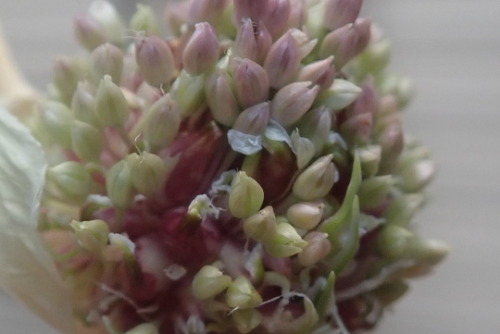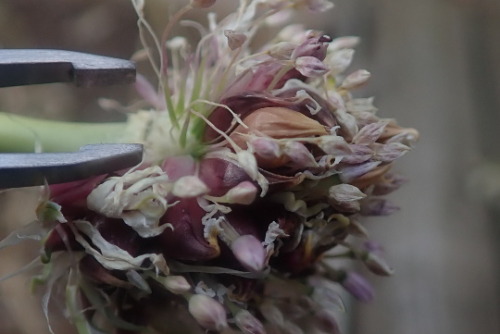lazyevaluationranch:16/08/2020 Garlic plants clone themselves. When a plant grows bulbs at its
lazyevaluationranch:16/08/2020 Garlic plants clone themselves. When a plant grows bulbs at its root, they’re just pieces of the parent plant, with the same genes, and if they are split off and planted, they grow into the same plant again. Garlic also grows little bulbils in flower heads. Those are clones too. There are maybe a hundred or so garlic plants in the world, copying themselves endlessly. If you buy a head of Rocambole garlic at the grocery store, it’s not a breed. It’s one plant. You buy and eat a piece of the same plant, every time.We eat the same plant upon which the light of the Great Comet of 1882, brighter than the moon, fell. The same plant remnant mammoth populations rooted up with their tusks. The plant that knew the Year Without A Summer. The plant that felt the New Madrid earthquake, when the Mississippi river ran backwards, and the Carrington flare, when auroras danced in the tropical sky and telegraphs sent ghost messages after their operators disconnected the power supplies. The same plant, unborn and undying, just split into small pieces and regrowing itself, again and again, over thousands of years.Vampires are not wrong to fear the stuff.We don’t know where garlic came from. We don’t know which wild allium it was made from, or made itself from. It’s difficult to determine the genetic origin of a sterile plant, and the most similar-looking wild garlic is also sterile and self-cloning, which does not provide any useful information whatsoever.For centuries, we had only the garlics that created themselves. In the 1950s, Soviet scientists figured out how to actually breed garlic. If the plant has bulbils, it will direct its energy to developing them, and the flowers never mature. But if you remove all the bulbils from the flower head, the garlic might, reluctantly, flower, accept visiting bees and pollen from other garlic plants, and make seeds combining their genes.As for us, we became preoccupied with whether or not we could, but we got so excited about making new garlic we forgot about whatever the rest of the quote says. I’m sure it’s fine.It takes about an hour to gently pry all the bulbils from a flower head with tweezers, leaving as many flowers as possible. The bulbils are solid and sturdy, and the flowers are pressed up against them on wispy, fragile stems. It was like playing jenga except half the pieces are pebbles and the other half are squares of toilet paper. We de-bulbed eight flowerheads, three Tibetan garlic and five Georgian Fire garlic. No idea whether we’ll have done well enough to get seeds on the first try.If you don’t hear from us again, at least we got to meddle with powers we didn’t understand. -- source link
Tumblr Blog : lazyevaluationranch.tumblr.com



